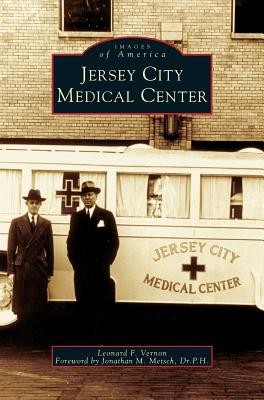
- We will send in 10–14 business days.
- Author: Leonard F Vernon
- Publisher: Arcadia Publishing Library Editions
- Year: 2004
- Pages: 130
- ISBN-10: 153162152X
- ISBN-13: 9781531621520
- Format: 17 x 24.4 x 1 cm, kieti viršeliai
- Language: English
- SAVE -10% with code: EXTRA
Reviews
Description
The history of healthcare in Jersey City dates back to the early nineteenth century, when the city operated a variety of public facilities for the poor. Jersey City Medical Center was originally located in a part of the city called Paulus Hook and was known as the Jersey City Charity Hospital. The hospital gradually stopped accepting charity patients and, in 1885, dropped the word "charity" from its name. When Mayor Frank Hague began an aggressive building campaign with the help of federal funds, an average city hospital was transformed into a comprehensive medical facility. On October 2, 1936, President Franklin D. Roosevelt laid the cornerstone of Jersey City Medical Center's new building at McGinley Square. Today the medical center is located near Grand Street and Jersey Avenue. Jersey City Medical Center traces the institution's history through its various transformations, ending in 2004, when its remaining two hundred patients were transferred to the new facility. This book is a tribute to the passing of an era.
EXTRA 10 % discount with code: EXTRA
The promotion ends in 23d.04:47:08
The discount code is valid when purchasing from 10 €. Discounts do not stack.
- Author: Leonard F Vernon
- Publisher: Arcadia Publishing Library Editions
- Year: 2004
- Pages: 130
- ISBN-10: 153162152X
- ISBN-13: 9781531621520
- Format: 17 x 24.4 x 1 cm, kieti viršeliai
- Language: English English
The history of healthcare in Jersey City dates back to the early nineteenth century, when the city operated a variety of public facilities for the poor. Jersey City Medical Center was originally located in a part of the city called Paulus Hook and was known as the Jersey City Charity Hospital. The hospital gradually stopped accepting charity patients and, in 1885, dropped the word "charity" from its name. When Mayor Frank Hague began an aggressive building campaign with the help of federal funds, an average city hospital was transformed into a comprehensive medical facility. On October 2, 1936, President Franklin D. Roosevelt laid the cornerstone of Jersey City Medical Center's new building at McGinley Square. Today the medical center is located near Grand Street and Jersey Avenue. Jersey City Medical Center traces the institution's history through its various transformations, ending in 2004, when its remaining two hundred patients were transferred to the new facility. This book is a tribute to the passing of an era.


Reviews